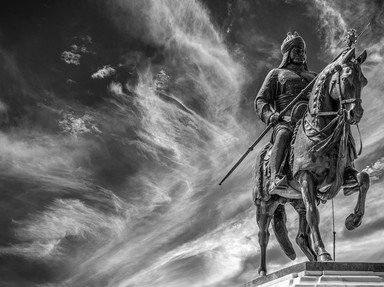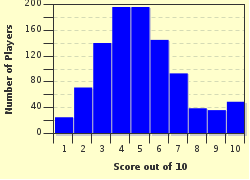Quiz Answer Key and Fun Facts
1. Which Brit sailed round the world in 'Gipsy Moth IV'?
2. Which of the world's great 'Gold Rushes' began in 1851?
3. What nationality was the first United Nations Secretary-General Trygve Lie?
4. Which famous battle was fought on August 26, 1346?
5. When ratified in 1933, what was the effect of the 21st Amendment to the U.S. Constitution?
6. The countries of Tanganyika, Rwanda and Burundi were formerly a single colony. By what name were they known between 1885 and 1918?
7. How old was Princess Diana when she died?
8. The ancient Kingdom of Moab occupied much of which modern-day country?
9. Amelia Earhart was the first woman to fly solo across which body of water?
10. William Eldon Warwick was the first captain of which ship?
Source: Author
EnglishJedi
This quiz was reviewed by FunTrivia editor
bloomsby before going online.
Any errors found in FunTrivia content are routinely corrected through our feedback system.

